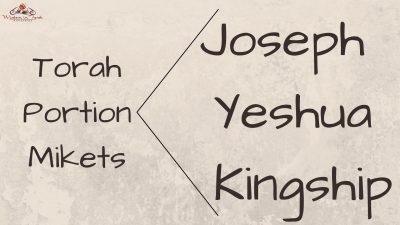
Don't Forget to Share!
Teaching done at Tel Dan.
Be sure to check out the additional info tab
Audio
Oops, you don't have access to this content
Resources
The following is a list of recommended resources for this teaching:
- More resources coming soon...
HIGH PLACE, CRITICAL ISSUES (בָּמָה, bamah; בָּמוֹת, bamoth). Offers an overview of the structure, forms, and functions of high places—a type of man-made religious installation in ancient Israel.
The Term “High Place” in Scripture
The Hebrew word translated “high place” (בָּמָה, bamah) has no known verbal root. It does have cognates in almost all other Semitic languages, including Akkadian, Ugaritic, and Arabic. The precise derivation and meaning of the term is unknown (Vaughan, The Meaning of “Bāmā,” 3–12; compare, Albright, “The High-Place,” 242, 249–50, 255–56; Hardy and Thomas, “Another Look” 175–88).
As “Back” or “Slope”. “High place” (בָּמָה, bamah) could refer to either a body part or a part of the landscape. It has various meanings in the Old Testament. In Deut 33:29 it refers to the back of a person and is translated “back,” “torso,” or “trunk.” In Isaiah 14:14 it refers metaphorically to the back of the clouds; similarly, in Job 9:8 it refers to the back of the sea (Job 9:8). The term can also refer to any point of elevated ground, such as the “slopes,” “hills,” “ridges,” or “sides” of the mountains (occurs only in the plural; 2 Sam 1:19, 25; Jer 26:18; Mic 3:12). For this range of meanings, the word often occurs in the Hebrew Bible with a verb and the preposition “upon” (עַל, al; e.g., 2 Sam 1:19, 25; Deut 32:13; 33:29; Amos 4:13; Job 9:8; Isa 14:14; 58:14; Haran, Temples and Temple-Service, 19; Schunck, “בָּמָה, bamah; bāmāh,” 139–40).
As a Religious Reference. The term “high place” (בָּמָה, bamah) appears over 100 times in reference to a religious site (Brown, Driver, and Briggs, Lexicon, 119). The verbs used to describe the activities performed on these sites attest to their religious function. The term often appears in conjunction with the verbs “to sacrifice” (זבח, zbch) or “to burn incense” (קטר, qtr), which were typically used to describe the religious rites that required a sacrificial altar:
• First Kings 22:43 states that people “still sacrificed and offered incense in the high places” (NRSV; compare 1 Kgs 3:2; 2 Kgs 12:3; 14:4)
• First Kings 3:3 states that “only he [King Solomon] sacrificed and burnt incense in high places” (KJV)
• Second Kings 16:4 states, “And he [King Ahaz] sacrificed and offered in the high places, and on the hills, and under every leafy tree” (JPS)
• Second Kings 23:5 refers to “the idolatrous priests whom the kings of Judah had ordained to burn incense on the high places” (NKJV)
The Topographical Setting of the High Place
Scripture refers to high places in various topographical locations throughout ancient Israel and Judah.
In Uninhabited Hills in Palestine. First Samuel 9 describes the high place associated with Saul’s anointing as a hill or raised platform that men would “go up” (1 Sam 9:13, 14, 19) and come “down” (1 Sam 9:25). The high place Solomon built for Chemosh and Molech was also on a mountain (1 Kgs 11:7). King Ahaz of Judah sacrificed and made offerings on the high places that were “on the hills and under every green tree” (2 Kgs 16:4).
In Ezekiel 6, Yahweh pronounced destruction of both “the mountains and the hills” and “the ravines and the valleys” for their association with high places (Ezek 6:3). The high places of Topheth, associated with child sacrifice, were “in the Valley of the Ben-Hinnom” (Jer 7:31–32 TNK; Jer 32:35; compare Jer 19:5; 2 Kgs 23:10).
In Established Settlements. Other high places are said to have been located in established settlements:
• “the cities” in which the people of Samaria lived (2 Kgs 17:29)
• the city of Gibeon (1 Chr 16:39; 21:29; 2 Chr 1:3, 13)
• “the cities of Judah and around Jerusalem” (2 Kgs 23:5)
• the entrance of the gate of Jerusalem (2 Kgs 23:8)
The priests of high places are also said to have been installed in various segments of an established settlement, such as “in Bethel” (1 Kgs 12:32), in all the cities of Samaria (2 Kgs 17:32), and in “the towns of Judah,” “from Geba to Beer-sheba” (2 Kgs 23:8–9).
In Neighboring Countries. The book of Isaiah refers to a high place in Moab, Israel’s neighboring country. In an oracle of judgment against Moab (Isa 15:1–16:14), Isaiah reports going up to the high places in the Moabite city of Dibon to weep over Nebo and Medeba (compare Isa 15:2; 16:12). The Moabite cities Dibon, Nebo, and Medeba were all mentioned on the Moabite Stone (Albright, “The Moabite Stone,” 287–8). The Moabite Stone also contains the Moabite form of the Hebrew word for “high place” (bmt, line 3); this is the only extant extra-biblical reference to the term “high place” outside Israel (Barrick, “The Bamoth of Moab,” 67–89). The high place that Moabite King Mesha built for Chemosh, the god of the Moabites, probably existed within the established settlement or city as a sanctuary complex (Dearman, “Historical Reconstruction,” 171; Fried, “The High Places (Bāmôt),” 437–42; Ahlström, Royal Administration, 13–20; Gleis, Die Bamah, 27–31).
Forms of the High Place
Numerous biblical references indicate that the high places were artificial, man-made constructions rather than naturally evolving religious sites. The types of the Hebrew verbs used in the descriptions of the construction and destruction of the high places provide insight into the various forms of high places. Scripture attests to high places being:
• “built” (בנה, bnh; 1 Kgs 11:7; 14:23; 2 Kgs 17:9; 21:3; 23:13; Jer 7:31; 19:5; 32:35; 2 Chr 33:3, 19)
• “made” (עשׂה, ‘sh; 2 Kgs 23:15, 19; 2 Chr 21:11; 28:25; Ezek 16:16)
• “pulled down,” or “torn down” (נתץ, ntts; 2 Kgs 23:8, 15; 2 Chr 31:1)
• “ruined” or “destroyed” (אבד, ‘bd; Ezek 6:3)
• “defiled” (טמא, tm’; 2 Kgs 23:8)
• “burned” (שׂרף, srp; 2 Kgs 23:15)
• “removed” or “taken away” (סור, swr; 1 Kgs 15:14; 22:44; 2 Kgs 12:3; 14:4; 18:4, 22)
The structure, location, function, and categorical type of the high place is debated. Relatively little archaeological evidence for authentic “high places” has been found. Yet the discoveries that have been made help inform the views regarding the form of the high place.
High Place as a Raised Platform or Altar. The prevailing view supposes that the high place was a constructed platform for an altar or a sacrificial altar itself. Those who hold this view consider a high place as something upon which religious rites could be performed.
• Vaughan claims the high place was a “constructed stone platform used for cultic rites” (Vaughan, “The Meaning of “Bāmā,” 25; Wright, “Pre-Israelite Temples,” 17–32).
• Haran categorized the high places as large, open-air altars, “simple, solid, and exposed constructions located in the open.” In his view, they served primarily as a setting for offering sacrifices rather than a divine dwelling place (Haran, Temples and Temple-Services, 18–25).
• Wellhausen used the expression “the system of high places” and applied the term “high places” (בָּמָה, bamah) to the altars constructed by the patriarchs at Shechem, Bethel, and Beer-sheba (Wellhausen, Prolegomena, 17–22).
Archaeological expeditions in Syria and Palestine have revealed open-air platforms and altars supposedly associated with cultic sites. Vaughan specifies two types of religious platforms that have been discovered: “truncated cones of some height; and low oblong ones which may also have had an altar standing on them” (Vaughan, The Meaning of “Bāmā,” 55). Examples of altars uncovered in excavations include:
• An enormous stone platform discovered at Tel Dan that dates to the Divided Monarchy (Biran, “To the God Who Is in Dan,” 142–45).
• An oval platform measuring 8–10 meters wide and made of unhewn stones discovered at Tell el-Mutesellim (i.e., Megiddo). This platform dates to the middle of the third millennium BC and probably remained in use until the 19th century BC, not long before Abraham arrived in Canaan. At this time, Megiddo a powerful city-state in the north of Canaan. This platform was preserved up to 1.25 meters above the surrounding area and had the shape of a huge round altar, which apparently was used for sacrificial purposes (Schunck, “בָּמָה, bamah; bāmāh,” 141).
• A heap of stones dating to the second millennium BC discovered at Nahariya. This structure was also roughly circular in shape (with a diameter of about 6 meters), forming the “focal point of a complex of cultic structures built ‘on a low hillock rising some 2 m above its surroundings’ ” (Vaughhan, The Meaning of “Bāmā,” 40).
• The 13th century BC funerary sanctuary at Tell el-Qedah (i.e., Hazor) contained a raised religious platform that seemed to be dedicated to formal sacrificial worship, as well as a series of standing stone pillars and numerous religious objects (Schunck, “בָּמָה, bamah; bāmāh,” 141).
In addition to platforms, both literary and archaeological resources attest to the use of numerous types of altars in ancient Israel. Ziony Zevit argues that the diversity in altar types points “to a variety of rituals … with different objectives” (Zevit, Religions of Ancient Israel, 347). He lists the various types of Israelite altars as follows (Zevit, Religions of Ancient Israel, 347):
• earthen and field stone altars that are slightly-elevated and used for offerings to Yahweh
• low altars used for offerings not dedicated to Yahweh (Ezek 33:25)
• altars with bases
• altars without bases
• altars with a horn
• altars without a horn
• round-shaped altars
• square-shaped altars
• rimmed altars
• unrimmed altars
• larger and smaller altars placed in juxtaposition (e.g., Arad and Megiddo)
High Place as a Local Religious Sanctuary. Another view proposes that high places were houses or multi-roomed building structures that would allow for multiple functions. Barrick points out that most biblical references to high places use the Hebrew verbs “to sacrifice” (זבח, zbch) and “to burn incense” (קטר, qtr) with the preposition “in,” “at,” or “within” (בְּ, b) rather than “on” or “upon” (עַל, al); in his view, this signals that a high place should be understood as “something within which cultic acts were performed” (Barrick, “High Places,” 199). Against this view, Haran suggests that the biblical writers chose “at” (בְּ, b) instead of “upon” (עַל, al) because certain architectural details of the high place favor this rendering (Haran, Temples and Temple-Services, 24). While distinguishing between the meanings of “upon” and “at,” Vaughan appeals to the so-called principle of prepositional “ambiguity,” whereby these prepositions can be considered semantically equivalent (Vaughan, The Meaning of “Bāmā,”, 31).
Barrick notes that some biblical texts substantiate the idea of a high place as a religious “installation within which cultic furniture could be housed and used,” rather than something upon which religious acts could be conducted (Barrick, “High Places,” 199). An example is 1 Sam 9, where Samuel was expected to preside at a sacrifice that would be held at the “high place” associated with the town of Zuph. This high place had a “room” or “hall” (לִשְׁכָּה, lishkah) capable of holding about 30 guests who ate the sacrificial meal (1 Sam 9:22). The function of this room is reminiscent of the holy chambers inside a roofed temple building where the priests ate the sacrificial offering and deposited the most holy offerings (Ezek 42:13). It is also possible that the high place associated with Gibeon, where Solomon offered 1000 burnt offerings and had a sacred encounter with the Lord “in a dream by night” (1 Kgs 3:4–5), might have been a building or included a room where Solomon could have spent the night.
Those who view high places as full-scale, roofed, multi-roomed structures suggest they may reflect the structure Jeroboam built at Dan and Bethel, referred to as the “house of high places” or a bet bamot (בַּ֫יִת בָּמָה, bayith bamah; KJV) in 1 Kgs 12:31 (compare JPS, NAS, NRS, RSV; NIV, NJB). The Moabite Stone also uses this term, recording that in addition to building a high place to Chemosh on the acropolis of Dibon, Mesha rebuilt a bet bamot there. Biran argues that Dibon and Dan are perhaps exceptions, rather than standard examples of high places (Biran, “To the God Who Is in Dan,” 143). From the references to the high places of Moab in the Hebrew Bible, archaeology, and the Moabite Stone, Barrick concludes that high places were located in established population centers rather than in the open (Barrick, “Bamoth of Moab,” 67–89; Fried, “The High Places,” 437–42). A temple complex dating to the 10th century BC and containing the remains of a massive podium, together with altars and multiple rooms, has been discovered at Tel Dan (Biran, “Dan,” 323–32; “High Places of Biblical Dan,” 148–49; Fried, “The High Places,” 442–43; Zevit, Religions of Ancient Israel, 180–85).
High Place as a Rural, Open-air Religious Site. A third, widely accepted view suggests that the high place was a rural, open-air religious site that might include an altar, standing pillars (מַצֵּבוֹת, matstsevoth), wooden sacred poles (אֲשֵׁרִים, asherim), and graven images (Exod 34:13; Lev 26:1; Deut 7:5; 12:3; 1 Kgs 14:23; 2 Kgs 17:10; see Dever, “The Silence of the Text,” 143–68). Biblical references to sacred pillars and the construction of sacred poles associated with Asherah and Baal frequently also refer to high places: “For they also built for themselves high places, pillars, and sacred poles on every high hill and under every green tree” (1 Kgs 14:23 NRSV). Those who hold this view suggest that Israel’s high places were Canaanite in origin and part of a foreign fertility cult. In Day’s view, the sacred pillars and poles, “as well as altars, were a regular feature of the local shrines … where Canaanite or syncretistic Canaanitizing worship was practiced in ancient Israel” (Day, “Asherah,” 486).
The rows of standing stone installations that have been excavated at Tell el-Jazar (Gezer) and Tell el-Qedah (Hazor) could be categorized as sacred standing pillars (Schunck, “בָּמָה, bamah; bāmāh,” 142). Macalister suggests the standing stone installation at Tell el-Jazar could serve as a Canaanite antecedent of the biblical high place (Macalister, The Excavation of Gezer, 381–406). Additionally, the “high places of the gates” from 2 Kgs 23:8 could be an open-air shrine that was on a small scale, situated between the city-gates (Biran, Biblical Dan, 244–46; Emerton, “The High Places of the Gates,” 455–67; Zevit, Religions of Ancient Israel, 191–96).
The pious kings of Judah, such as Asa (2 Chr 14:3), Jehoshaphat (2 Chr 17:6), Hezekiah (2 Kgs 18:4), and Josiah (2 Kgs 23:14), are recorded as removing standing stones and sacred poles and destroying high places as part of their reforms. However, the archaeological strata from Judah and Samaria ca. eighth—seventh centuries BC shows little visible evidence for purposeful dismantling (i.e., by Hezekiah, 2 Kgs 18:3–4), rebuilding (Manasseh, 2 Kgs 21:3), and dismantling (Josiah, 2 Kgs 23:8), which calls into question the historicity of Hezekiah and Josiah’s reforms (e.g., Edelman, “Hezekiah‘s Alleged Cultic Centralization,” 395–434; Na‘aman, “Debated Historicity,” 184–; Fried, “The High Places,” 437, 458–60). It is unclear whether the destruction of the discovered sites was due to the Judaean reforms or foreign invaders.
Biblical Attitude toward High Places
The Deuteronomistic History and the books of Chronicles indicate that early in Israel’s history, high places were regarded as acceptable worship sites. These texts contain multiple examples of high places, including those at Ramah (1 Sam 9:12–14, 19, 25), Gibeah-Elohim (1 Sam 10:5, 13), and Gibeon (1 Kgs 3:4; 1 Chr 16:39; 21:29; 2 Chr 1:3, 13). First Kings 3:2–3 states, “The people were sacrificing at the high places, however, because no house had yet been built for the name of the Lord. Solomon loved the Lord … only he sacrificed and made offerings at the high places” (ESV).
Once the temple at Jerusalem was completed, it became the only acceptable site of the worship of Yahweh. The high places were condemned as illegitimate religious sites to be destroyed or removed. However, the establishment of the official, centralized sanctuaries of the Israelite monarchy did not bring about the replacement of other models of sacred space. Neither the Jerusalem temple of Judah nor the Israelite temples of Dan and Bethel ever replaced the other local cultic places of worship. LaRocca-Pitts concludes that the high places became illegitimate because they competed with the Jerusalem temple (LaRocca-Pitts, “Of Wood and Stone”, 158). Both Kings and Chronicles praise Hezekiah and Josiah for suppressing the high places in their religious reforms (2 Kgs 18:3–4; 23:5, 8–9; 2 Chr 31:1; 34:3).
Portraits of High Places in the Prophets
The Prophets contain various references to high places. Hosea and Amos condemned the high places as Israel’s regional shrines that tempered the proper worship of Yahweh with illicit cultic components. Hosea 10:1–10 condemns Israel for producing and multiplying its illicit altars, pillars, and high places. Bethel’s high places are Hosea’s prime target, representing the wickedness of Israel’s idolatry (Hos 10:5–6, 8). Amos 7:9 associates the high places with the name “Isaac,” a rare designation representing the worship of the Northern Kingdom, in parallel with “the sanctuaries of Israel.” LaRocca-Pitts describes the pronounced destruction of both the high places of Isaac and the sanctuaries of Israel “as part of judgment oracle against the cult and royal house of the northern kingdom” (LaRocca-Pitts, “Of Wood & Stone”, 88).
In his oracles, Micah calls Jerusalem itself a high place (Mic 1:5), announcing divine judgment upon the city of Jerusalem and the temple (Mic 3:12). He positions the phrase “the transgression of Jacob” in parallel with “the high place of Judah,” while Samaria (Israel’s capital) corresponded to Jerusalem, the capital of Judah. Distinguished from its conventional usage as a reference to local and provincial sanctuaries, the high place here probably refers to Solomon’s temple in Jerusalem.
Isaiah refers to one Israelite high place (Isa 36:7) and two high places in Moab (Isa 15:2; 16:12). In the first instance, the prophet delivers a judgment oracle concerning Moab (Isa 15:1–16:14) and describes the high place in Moab as the place for a communal ritual of mourning. He describes lament over Moab taking place in the temple and in the high places (Isa 15:2). In the second instance, Isaiah depicts the high place as a sanctuary where people come to pray (Isa 16:12). LaRocca-Pitts suggests Isaiah made “these statements to imply that Moab had no shrines which were equal in scale to Jerusalem’s Temple” (LaRocca-Pitts, “Of Wood and Stone”, 147).
The book of Jeremiah accuses the Judaeans of using high places for child sacrifice. Jeremiah 7:31 says the people constructed the “high places of Topheth” (בָּמ֣וֹת הַתֹּ֗פֶת, bamoth hattopheth) in the valley of Ben-Hinnom for child sacrifice; similarly, Jer 19:5 refers to “the high places of Baal” (בָּמ֣וֹת הַבַּ֗עַל, bamoth habba’al) which they built “to burn their children in the fire as burnt offerings to Baal” (NRSV). The association of high places with the practice of child sacrifice is a unique feature of Jeremiah. Carroll asserts that the high place of Topheth functioned as the product of “a process of alienation,” which turned the sanctuary “into a foreign place” (Carroll, Jeremiah, 388).
Ezekiel refers to high places in towns (Ezek 6:6) and to practices of idolatry “on every high hill, on all the mountain tops, under every green tree, and under every leafy oak, wherever they offered pleasing odor to all their idols” (Ezek 6:13 NRSV). For Ezekiel, the high places represented the embodiment of and the pinnacle of Israel’s idolatry.
Bibliography
Ahlström, Gösta W. Royal Administration and National Religion in Ancient Palestine. Leiden: Brill, 1982.
Albright, William F. “The High-Place in Ancient Palestine.” Pages 242–58 in Supplements to Vetus Testamentum 4. Leiden: Brill, 1957.
———. “The Moabite Stone.” Pages 287–88 in The Ancient Near East: An Anthology of Texts & Pictures. Edited by James B. Pritchard. Princeton, N.J.: Princeton University Press, 2011.
Arreola, Daniel D. “Mexican American Housescapes.” Geographical Review 78 (1998): 299–315.
Barrick, W. Boyd. “What Do We Really Know about “High Places’?” SEA 45 (1980): 50–57.
———. “The Bamoth of Moab.” Maarav 7 (1991): 67–89.
———. “On the Meaning of Beth-Ha~Bamoth and Bate-Habamoth and the Composition of the Kings History.” Journal of Biblical Literature 115, no. 4 (Winter 1996): 621–42.
Biran, Avraham. “To the God Who Is In Dan.” Pages 142–51 in Temples and High Places in Biblical Times. Proceedings of the Colloquium in Honor of the Centennial of Hebrew Union College-Jewish Institute of Religion. Edited by Avraham Biran. Jerusalem: The Nelson Glueck School of Biblical Archaeology of Hebrew Union College, 1977.
———. “Dan.” Pages 323–32 in vol. 1 of New Encyclopedia of Archaeological Excavations in the Holy Land. Edited by Ephraim Stern. Jerusalem: Society for the Study of the Land of Israel and Her Antiquities, 1992.
———. Biblical Dan. Jerusalem: Israel Exploration Society, 1994.
———. “The High Places of Biblical Dan.” Pages 148–55 in Studies in the Archaeology of the Iron Age in Israel and Jordan. Edited by Amihai Mazar. Sheffield: Sheffield Academic Press, 2001.
Bolle, Kees W. “Altar, Historical Background.” Pages 343–44 in vol. 1 of New Catholic Encyclopedia. Washington, D.C.: Catholic University of America, 2003.
Brown, Francis, Samuel R. Driver, and Charles A. Briggs. Hebrew and English Lexicon With An Appendix Containing the Biblical Aramaic. Peabody, Mass.: Hendrickson, 1996.
Bowker, John. The Concise Oxford Dictionary of World Religions. Oxford: Oxford University Press, 2000.
Brandon, Samuel G. F. “Altar.” Pages 62–63 in Dictionary of Comparative Religion. Edited by Samuel G. F. Brandon. New York: Scribner, 1970.
Carroll, Robert P. Jeremiah: A Commentary. Old Testament Library. London: SCM, 1986.
Day, John. “Asherah in the Hebrew Bible and Northwest Semitic Literature.” Journal of Biblical Literature 105 (1986): 385–408.
De Vaux, Roland. Ancient Israel: Its Life and Institutions. Translated by John McHugh. Grand Rapids: Eerdmans, 1997.
Dearman, John Andrew. “Historical Reconstruction.” Pages 155–210 in Studies in the Mesha Inscription and Moab. Edited by John Andrew Dearman. Atlanta: Scholars Press, 1989.
Dever, William G. “The Silence of the Text: An Archaeological Commentary on 2 Kings 23.” Pages 143–68 in Scripture and Other Artifacts: Essays on the Bible and Archaeology in Honor of Philip J. King. Edited by Michael D. Coogan, J. C. Exum, and Lawrence E. Stager. Louisville: Westminster John Knox, 1994.
Edelman, Diana. “Hezekiah‘s Alleged Cultic Centralization.” Journal for the Study of the Old Testament 32, no. 4 (2008): 395–434.
Emerton, John A. “’The High Places of the Gates’ in 2 Kings XXIII 8.” Vetus Testamentum 44, no. 4 (1994): 455–67.
Freedman, David Noel. “Temples and High Places in Israel.” Biblical Archaeology 40, no. 2 (May 1977): 46–91.
Fried, Lisbeth S. “The High Places (Bāmôt) and the Reforms of Hezekiah and Josiah: An Archaeological Investigation.” Journal of the American Oriental Society 122, no. 3 (July 2002): 437–65.
Gleis, Matthias. Die Bamah. Berlin: Walter de Gruyter, 1997.
Gutiérrez, Ramón A. Home Altars of Mexico. Albuquerque, N.M.: University of New Mexico Press, 1997.
Haran, Menahem. Temples and Temple Service in Ancient Israel: An Inquiry into the Character of Cult Phenomena and the Historical Setting of the Priestly School. Oxford: Clarendon, 1978.
Hardy, Humphrey Hill II, and Benjamin D. Thomas. “Another Look at Biblical Hebrew bama ‘High Place.’ ” Vetus Testamentum 62, no. 2 (2012): 175–88.
King, Philip J., and Lawrence E. Stager. Life in Biblical Israel. Louisville, Ky.: Westminster John Knox, 2001.
LaRocca-Pitts, Elizabeth C. “Of Wood and Stone”: The Significance of Israelite Cultic Items in the Bible and Its Early Interpreters. Winona Lake, Ind.: Eisenbrauns, 2001.
Macalister, Robert A. S. The Excavation of Gezer: 1902–1905 and 1907–1909. Vol. 2. London: John Murray, 1912.
Meyers, Carol L. “The Israelite Empire: In Defense of King Solomon.” Michigan Quarterly Review 22 (1983): 412–28.
McCown, Chester Charlton. “Hebrew High Places and Cult Remains.” Journal of Biblical Literature 69, no. 3 (Summer 1950): 205–19.
Na‘aman, Nadav. “The Debated Historicity of Hezekiah‘s Reform in the Light of Historical and Archaeological Research.” ZAW 107, no. 2 (1995): 179–95.
Nakhai, Beth Alpert. Archaeology and the Religions of Canaan and Israel. Boston: American Schools of Oriental Research, 2001.
Paul, Shalom M. Amos. Edited by Frank M. Cross. Hermeneia. Minneapolis: Fortress, 1991.
Redmon, R. X. “Altar, In the Liturgy.” Pages 347–51 in vol. 1 of New Catholic Encyclopedia. Washington, D.C.: Catholic University of America, 2003.
Schunck, K.-D. “בָּמָה (bamah) bāmāh.” Pages 139–45 in vol. 2 of TDOT. Edited by G. Johannes Botter Weck and Helmer Ringgren. Grand Rapids: Eerdmans, 1975.
Seow, Choon-Leong. The First and Second Books of Kings. New Interpreter’s Bible 3. Nashville: Abingdon, 1999.
Stump, Roger W. The Geography of Religion: Faith, Place, and Space. Lanham, Md.: Rowman and Littlefield Publishers, 2008.
Sweeney, Marvin A. I & II Kings: A Commentary. Old Testament Library. Louisville, Ky.: Westminster John Knox, 2007.
Vaughan, Patrick H. The Meaning of “Bāmā” in the Old Testament: A Study of Etymological, Textual and Archaeological Evidence. Cambridge: Cambridge University Press, 1974.
Wellhausen, Julius. Prolegomena to the History of Ancient Israel. Edinburgh: A & C Black, 1885. Repr., New York: Meridian Books, 1957.
Wright, George R. H. “Pre-Israelite temples in the land of Canaan.” Palestine Exploration Quarterly 103, no. 1 (1971): 17–32.
Zevit, Ziony. The Religions of Ancient Israel: A Synthesis of Parallactic Approaches. London: Continuum, 2001.
SUN HEE KIM
Kim, S. H. (2012, 2013, 2014, 2015). High Place, Critical Issues. In J. D. Barry, D. Bomar, D. R. Brown, R. Klippenstein, D. Mangum, C. Sinclair Wolcott, … W. Widder (Eds.), The Lexham Bible Dictionary. Bellingham, WA: Lexham Press.






